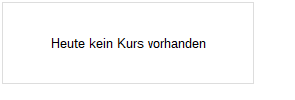
Standard Life Investments Property Income Trust - Annual Report and Accounts
PR Newswire
London, April 5
6 April 2018
STANDARD LIFE INVESTMENTS PROPERTY INCOME TRUST
RESULTS IN RESPECT OF THE YEAR ENDED 31 DECEMBER 2017
Financial Highlights
-NAV total return of 14.5% in the year, driven by strong portfolio performance due to overweight exposure to outperforming Industrial sector.
-Strong share price total return over the year of 13.7% compared to the total return on the FTSE All-Share REIT Index of 12.2% and the FTSE All-Share Index of 13.1% with the Company’s shares trading at a premium to NAV of 6.4% as at 31 December 2017.
-The Company has continued to reduce gearing with an LTV of 18.0% at year end (31 Dec 2016: 26.0%) at an attractive interest rate of 2.7%.
-Dividend cover of 104% over the year as the Company continued to pay a covered dividend.
-The yield on the Company’s share price as at 31 December 2017 stood at 5.1% which compares favourably to the FTSE All-Share REIT Index (3.6%) and FTSE All-Share Index (3.4%) at the same date.
-Since 1 January 2017 to date a total of 22.425 million shares were issued under the Company’s blocklisting facility generating net proceeds of £20 million for investment into the portfolio.
-Overall, the Company, with a market capitalisation of £368 million as at 31 December 2017, has a secure and growing balance sheet, significant financial resources and a portfolio of assets that continues to underpin an attractive and covered dividend for shareholders.
Property Highlights
-As at 31 December 2017, the portfolio was valued at £433.2 million following an exercise that repositioned the portfolio into assets that offer more secure income and reduce risk.
-Property total return for the period was 12.1%, significantly ahead of the IPD Quarterly version of Monthly Index total return of 10.5%. The income return of 6.3% from the portfolio continued to outperform the comparative benchmark figure of 4.8% with a capital return of 5.5% in line with that of the benchmark.
-A number of successful asset management initiatives, contributing to income and capital values, completed during the year including:
-8 new lettings generating £512,000 per annum of income during the year
-14 lease renegotiations/rent reviews securing £740,000 per annum of income
-Void rate of 7.7% as at year end with majority of voids being in the Company’s favoured industrial sector.
-Positive rent collection rates of 99% within 21 days highlighting the continued strength of tenant covenants in an environment where income will be the key component of returns going forward.
PERFORMANCE SUMMARY
| Earnings & Dividends | 31 December 2017 | 31 December 2016 | ||
| Revenue earnings per share (excluding capital items & swap movements) (p) | 4.99 | 5.56 | ||
| Dividends declared per ordinary share (p) | 4.76 | 4.76 | ||
| Dividend cover (%)* | 104 | 117 | ||
| Dividend yield (%)** | 5.1 | 5.5 | ||
| FTSE Real Estate Investment Trusts Index Yield (%) | 3.6 | 3.7 | ||
| FTSE All-Share Index Yield (%) | 3.4 | 3.5 | ||
| Ongoing Charges*** | ||||
| As a % of average net assets including direct property costs | 1.7 | 1.7 | ||
| As a % of average net assets excluding direct property costs | 1.2 | 1.3 |
| Capital Values & Gearing | 31 December 2017 | 31 December 2016 | Change % | |
| Total Assets (£million) | 468.8 | 445.7 | 5.0 | |
| Net asset value per share (p) (note 20) | 87.6 | 81.0 | 8.1 | |
| Ordinary Share Price (p) | 93.25 | 86.50 | 7.8 | |
| Premium to NAV (%) | 6.4 | 6.8 | ||
| Loan to value (%)**** | 18.0 | 26.0 |
| Total Return | 1 Year % Return | 3 Year % Return | 5 Year % Return | |
| NAV***** | 14.5 | 38.1 | 112.9 | |
| Share Price**** | 13.7 | 40.5 | 115.8 | |
| FTSE All-Share REIT Index | 12.2 | 15.4 | 70.8 | |
| FTSE All-Share Index | 13.1 | 33.3 | 63.0 |
| Property Returns & Statistics % | 31 December 2017 | 31 December 2016 | ||
| Property income return | 6.3 | 6.5 | ||
| IPD benchmark income return | 4.8 | 4.8 | ||
| Property total return | 12.1 | 5.8 | ||
| IPD benchmark total return | 10.5 | 2.2 | ||
| Void rate | 7.7 | 3.3 |
* Calculated as revenue earnings per share (excluding capital items & swaps breakage costs) as a percentage of dividends declared per ordinary share.
** Based on an annual dividend of 4.76p and the share price at 31 December.
*** Calculated as investment manager fees, auditor’s fees, directors’ fees and other administrative expenses divided by the average NAV for the year.
**** Calculated as bank borrowings less all cash (including cash held at solicitors) as a percentage of the open market value of the property portfolio as at the end of each year.
***** Assumes re-investment of dividends excluding transaction costs.
Sources: Standard Life Investments, Investment Property Databank (“IPD”)
CHAIRMAN’S STATEMENT
I am pleased to report that your Group has continued to produce strong returns at both a NAV and shareholder level over the year. These returns have been underpinned by a portfolio that has been significantly re-positioned in the year, with investment into assets in favoured sectors that offer more secure income and reduce risk in the portfolio.
Background
The shadow of increasing political uncertainty, initially created by the unknowns of Brexit, but further increased by the worrying development of trade wars and the rising tensions with Russia, are hanging over the UK. Brexit, in particular, has resulted in a slowdown in the growth of the UK economy which remains positive if unspectacular. GDP grew by 1.7% in 2017, ahead of many forecasts at the start of the year but lower than in 2016. This contrasts with the strong pick-up in growth in both the US and the Eurozone. There are many reasons for the slowdown in the UK economy but commentators generally agree that there are two main causes. The first is the squeeze on disposable incomes resulting from the pick-up in inflation stemming from the 2016 Brexit vote and the subsequent fall in the value of the pound. The second, and potentially more worrying, is the fact that business investment has been much weaker than expected with many companies delaying new projects until the outcome of any Brexit deal becomes clear.
In this uncertain environment, the performance of the real estate market has surprised on the upside. The Group’s benchmark (IPD quarterly version of IPD Monthly Index Funds) produced a total return of 10.5% in 2017, coming in ahead of the IPF Consensus expectations for the year of 3.2%. Capital growth was robust over the year with values rising by 5.5%, driven by the buoyant performance of the industrial sector. On the income side, rental growth was recorded in all sectors resulting in overall rental growth of 1.9% and an income return of 4.8%.
Performance
The Group has performed well in the year. The portfolio total return was 12.1% representing a significant margin over the benchmark return. This outperformance was driven by an above benchmark portfolio income return of 6.3% and a capital return of 5.5%. The capital return was achieved despite the drag of transaction costs resulting from a total turnover in the portfolio during the year of £122 million. This positive portfolio performance, combined with a conservative level of gearing, helped the Group achieve an attractive NAV total return of 14.5%.
The Company’s shares continued to trade at a premium, which stood at 6.4% to NAV at the year end, underlining investors’ appetite for attractive, secure income returns. This continued demand for the Company’s shares allowed the Company to undertake NAV accretive share issuances under its blocklisting authority. Up to 5 April 2018, a total of 22.425 million shares have been issued from the beginning of the blocklisting facility at an average premium to NAV of 6.4% raising £20 million for investment into the portfolio. The premium at the end of the year was marginally less than the premium at the end of the previous financial year which meant that the total shareholder return for the year was slightly lower than the NAV total return at 13.7%.
Over the longer term the Group has also delivered good performance with a NAV and share price total return over five years of 112.9% and 115.8% respectively. By comparison, the FTSE All-Share REIT Index returned 70.8% and the FTSE All-Share Index returned 63.0% over the same period.
Dividends
Dividends totalling 4.76p were paid to shareholders in the year. This represents a yield of 5.1% based on the share price at 31 December 2017 which compares favourably to the yield on the FTSE All-Share REIT and FTSE All-Share Indices (3.6% and 3.4% respectively).
Importantly, the dividend was more than fully covered by earnings for the year (104%) which was achieved despite net disposals of £22 million and the resultant loss in income. The Board is fully aware of the importance to shareholders of paying out an attractive income, with the maintenance of an appropriate dividend cover being a key focus in the year ahead.
Financial Resources
As at the year end, the Group had a prudent Loan to Value ratio of 18% reflecting the relatively cautious outlook going forward. The Group has in place a term loan which is not due to expire until 2023 at a fixed interest rate of 2.73%. This compares to the net initial yield on the portfolio of 5.5%, highlighting the income accretive nature of this debt. The Group also had significant firepower still available for investment with £35 million of its revolving credit facility to utilise and uncommitted cash of £18.3 million at the year end. Overall, the board believes the Group is in a good financial position with a strong balance sheet and significant resources still available for investment.
Dick Barfield
It is with great sadness that I have to report that my predecessor as Chairman, Mr Dick Barfield, recently passed away after a short illness. Dick, who retired at the AGM in June 2016, was a man of great character, leadership and integrity and he will be sorely missed.
Outlook
The expectation for the next year is for more moderate economic growth. However the extent of this moderation will be largely dependant on the perceived success or otherwise of the Brexit negotiations which, in turn, will impact on the level of business investment. In addition, the extent of any rise in interest rates, which the Bank of England has indicated may rise more rapidly than forecast, will also influence the performance of the economy and the property market in the upcoming year.
In terms of the UK real estate market, values are now in excess of the level before the Brexit vote in 2016 with strong fundamentals in place. The yields generated by UK real estate are still significantly higher than the other mainstream asset classes. In addition, unlike in previous cycles, the leverage in the sector is prudent and the market is still fairly liquid. Finally, by historical standards, limited development and lower than average vacancy rates should all provide a solid foundation for future positive returns, albeit more geared towards income in the immediate future.
In this environment, your Board believes the Group is in a good position. While it is anticipated there may be more volatility in secondary assets going forward, the portfolio of 54 assets at the year-end is well diversified both by geography and sector. In terms of the latter, the Group had a 49.2% exposure to Industrials which our Investment Manager forecasts will remain the top performing sector in 2018. The repositioning exercise, which has continued into 2018, has also helped de-risk the portfolio by selling assets that had limited future return prospects, particularly in the retail sector, which the Company had a 16.1% exposure to at year end (benchmark 35.7%), and reinvesting the proceeds into assets in stronger sectors, such as well-located offices and industrial units, which offer more secure income. Also, as highlighted, it is anticipated that income will be the main driver of future returns. In this respect the Group has a strong and diverse tenant base which underpins the high income return and the attractive, covered dividend the Group continues to pay. Finally, the Group has a strong balance sheet, prudent gearing and significant cash resources still available to invest, boosted by ongoing NAV accretive share issues. Combining these factors, I believe your Company is well set up to continue to deliver attractive relative returns in the future.
Robert Peto
Chairman
5 April 2018
STRATEGIC OVERVIEW
Objective
The objective of the Group is to provide shareholders with an attractive level of income together with the prospect of income and capital growth.
Investment Policy and Business Model
The Board intends to achieve the investment objective by investing in a diversified portfolio of UK commercial properties. The majority of the portfolio will be invested in direct holdings within the three main commercial property sectors of retail, office and industrial although the Group may also invest in other commercial property such as hotels, nursing homes and student housing. Investment in property development and investment in co-investment vehicles, where there is more than one investor, is permitted up to a maximum of 10% of the property portfolio.
In order to manage risk, without compromising flexibility, the Board applies the following restrictions to the property portfolio, in normal market conditions:
-No property will be greater by value than 15% of total assets.
-No tenant (excluding the Government) will be responsible for more than 20% of the Group’s rent roll.
-Gearing, calculated as borrowings as a percentage of gross assets, will not exceed 65%. The Board’s current intention is that the Group’s loan to value ratio (calculated as borrowings less all cash as a proportion of property portfolio valuation) will not exceed 45%.
As part of its strategy, the Board has contractually delegated the management of the property portfolio, and other services, to Standard Life Investments (Corporate Funds) Limited (“Investment Manager”).
Strategy
Each year the Board undertakes a strategic review, with the help of its Investment Manager and other advisers.
The overall intention is to continue to distribute an attractive income return alongside growth in the NAV and a good overall total return relative to the peer group.
At property level, it is intended that the Group remains primarily invested in the commercial sector, while keeping a watching brief on other classes such as student accommodation and care homes. The Group is principally invested in office, industrial and retail properties and intends to remain so.
The Board’s preference is to buy into good but not necessarily prime locations, where it perceives there will be good continuing tenant demand, and to seek out properties where the asset management skills within the Investment Manager can be used to beneficial effect. The Board will continue to have very careful regard to tenant profiles.
The Board continues to seek out opportunities for further, controlled growth in the Group. During 2017 and up to 5 April 2018, the Group raised an additional £22.425 million through new share issues, as detailed in the Chairman’s Statement.
The Group continues to maintain a tax efficient structure, having migrated its tax residence to the UK and becoming a UK REIT on 1 January 2015.
The Board
The Board currently consists of a non-executive Chairman and four non-executive Directors, with a range of property, investment, commercial and financial experience. There is also a commitment to achieve the proper levels of diversity. At the date of this report, the Board consisted of one female and four male Directors. The Group does not have any employees.
Key Performance Indicators
The Board meets quarterly and at each meeting reviews performance against a number of key measures:
Property income and total return against the Quarterly Version of the IPD Balanced Monthly Funds Index (“the Index”).
The Index provides a benchmark for the performance of the Group’s property portfolio and enables the Board to assess how the portfolio is performing relative to the market. A comparison is made of the Group’s property returns against the Index over a variety of time periods (quarter, annual, three years and five years).
Property voids.
Property voids are unlet properties. The Board reviews the level of property voids within the Group’s portfolio on a quarterly basis and compares the level to the market average, as measured by the IPD. The Board seeks to ensure that, when a property becomes void, the Investment Manager gives proper priority to seeking a new tenant to maintain income.
Rent collection dates.
The Board assesses rent collection by reviewing the percentage of rents collected within 21 days of each quarter end.
Net asset value total return.
The net asset value total return reflects both the net asset value growth of the Group and also the dividends paid to shareholders. The Board regards this as the best overall measure of value delivered to shareholders. The Board assesses the net asset value total return of the Group over various time periods (quarter, annual, three years, five years) and compares the Group’s returns to those of its peer group of listed, closed-ended property investment companies.
Premium or discount of the share price to net asset value.
The Board closely monitors the premium or discount of the share price to the NAV and believes that a key driver to the level of the premium or discount is the Group’s long term investment performance. However, there can be short term volatility in the premium or discount and the Board takes powers at each Annual General Meeting (“AGM”) to enable it to issue or buy back shares with a view to limiting this volatility.
Dividend per share and dividend cover.
A key objective of the Group is to provide an attractive, sustainable level of income to shareholders and the Board reviews, at each Board meeting, the level of dividend per share and the dividend cover, in conjunction with detailed financial forecasts, to ensure that this objective is being met and is sustainable.
The Board considers the performance measures both over various time periods and against similar funds.
A record of these measures is disclosed in the Financial and Property Highlights, Chairman’s Statement and Investment Manager’s Report.
Principal Risks and Uncertainties
The Board ensures that proper consideration of risk is undertaken in all aspects of the Group’s business on a regular basis. During the year, the Board carried out an assessment of the risk profile of the Group, including consideration of risk appetite, risk tolerance and risk strategy. The Board regularly reviews the principal risks of the Group, seeking assurance that these risks are appropriately rated and ensuring that appropriate risk mitigation is in place.
The Group’s assets consist of direct investments in UK commercial property. Its principal risks are therefore related to the commercial property market in general, but also the particular circumstances of the properties in which it is invested, and their tenants. The Board and Investment Manager seek to mitigate these risks through a strong initial due diligence process, continual review of the portfolio and active asset management initiatives. All of the properties in the portfolio are insured, providing protection against risks to the properties and also protection in case of injury to third parties in relation to the properties.
The Board has also identified a number of other specific risks that are reviewed at each Board meeting. These are as follows:
The Group and its objectives become unattractive to investors, leading to widening of the discount.
This risk is mitigated through regular contact with shareholders, a regular review of share price performance and the level of the discount or premium at which the shares trade to net asset value and regular meetings with the Group’s broker to discuss these points and address any issues that arise.
Net revenue falls such that the Group cannot sustain its level of dividend, for example due to tenant failure or inability to let properties.
This risk is mitigated through regular review of forecast dividend cover and regular review of tenant mix, risk and profile. Due diligence work on potential tenants is undertaken before entering into new lease arrangements and tenants are kept under constant review through regular contact and various reports both from the managing agents and the Investment Manager’s own reporting process. Contingency plans are put in place at units that have tenants that are believed to be in financial trouble. The Group subscribes to the Investment Property Databank Iris Report which updates the credit and risk ranking of the tenants and income stream, and compares it to the rest of the UK real estate market.
Uncertainty or change in the macroeconomic environment results in property becoming an undesirable asset class, causing a decline in property values.
This risk is managed through regular reporting from, and discussion with, the Investment Manager and other advisers. Macroeconomic conditions form part of the decision making process for purchases and sales of properties and for sector allocation decisions. Macroeconomic uncertainty continued during 2017, particularly in relation to the UK’s decision to leave the EU. The Board continues to closely monitor the effect of this on property values and also the impact of any resultant regulatory changes that may impact the Group.
Breach of loan covenants.
This risk is mitigated by the Investment Manager monitoring the loan covenants on a regular basis and providing a quarterly certificate to the bank confirming compliance with the covenants. Compliance is also reviewed by the Board each quarter and there is regular dialogue between the Investment Manager and the bank on Group activity and performance.
Mehr Nachrichten zur STANDARD LIFE I.P. LS-,01 Aktie kostenlos abonnieren
(Mit der Bestellung akzeptierst du die Datenschutzhinweise)

Hinweis: ARIVA.DE veröffentlicht in dieser Rubrik Analysen, Kolumnen und Nachrichten aus verschiedenen Quellen. Die ARIVA.DE AG ist nicht verantwortlich für Inhalte, die erkennbar von Dritten in den „News“-Bereich dieser Webseite eingestellt worden sind, und macht sich diese nicht zu Eigen. Diese Inhalte sind insbesondere durch eine entsprechende „von“-Kennzeichnung unterhalb der Artikelüberschrift und/oder durch den Link „Um den vollständigen Artikel zu lesen, klicken Sie bitte hier.“ erkennbar; verantwortlich für diese Inhalte ist allein der genannte Dritte.




